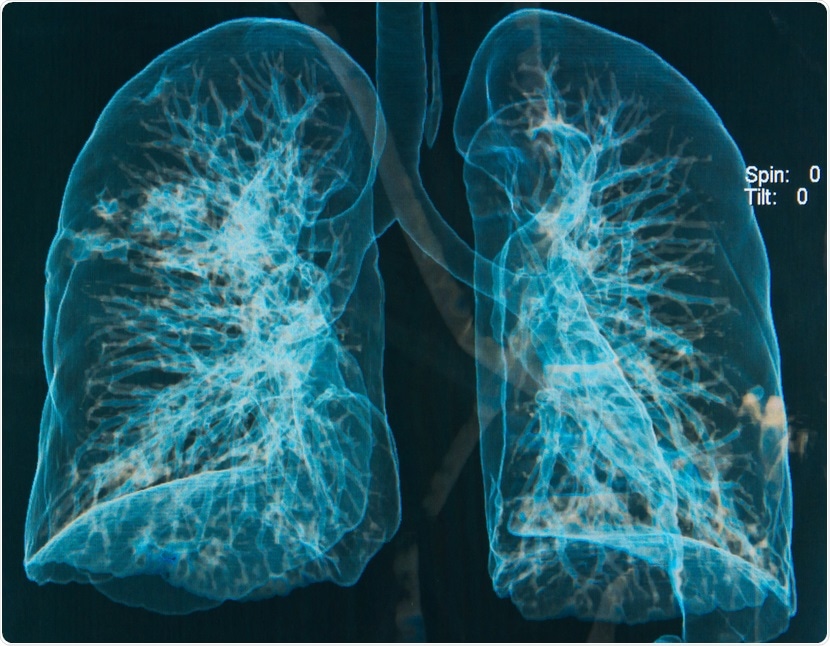
Mystery respiratory illnesses
A large proportion of otherwise apparently healthy high schoolers and young adults are developing respiratory problems. Since June, 28 people in Utah have developed mystery respiratory illnesses and a further 200 cases have been reported across 25 states nationwide.Reported symptoms have included breathing difficulty, chest pain, and diarrhea and vomiting, but the patients have not had any known infections. They simply do not seem to be able to breathe properly and the only link between them is that they had all vaped recently.
Subsequently, the FDA, the Centers for Disease Control and Prevention (CDC) and local health agencies have all been trying to solve the mystery, especially since a whole fifth of high schoolers currently vape.
Now, a study recently published in the Journal of Clinical Investigation may shed some light on the matter.
Inhaling vapor changed cells that protect against infection
Pulmonologist Farrah Kheradmand at Baylor College of Medicine and colleagues have shown that when exposed to e-cig vape, mice did not develop emphysema like cigarette-smoking mice did, but they did develop other problems.Simply inhaling the vapor, even if did not contain nicotine, changed cells in the lungs that usually protect against infection.
Kheradmand says those changes compromise the ability to defend against bacteria and viruses and basically leave the mice with a dysfunctional lung immune system.
Gaseous exchange and macrophage function disrupted
Lungs regulate the process of gaseous exchange, which enables oxygen to be inhaled and carbon dioxide to be exhaled. However, contaminants such as bacteria, viruses, and pollution may also be inhaled. This is protected against in the lungs by a thin layer of lipids that line the lungs and also by immune cells called macrophages.The lipid layer binds these contaminants and prevents them from reaching the alveoli, where gaseous exchange occurs. Macrophages also internalize the invaders and ensure the lipid layer is replenished several times a day.
What the current study has now shown is that solvents in the e-cig vape appear to disrupt this process by damaging the lipids and preventing macrophages from “clearing up.”
The researchers are not sure precisely what is happening to the lipids, but they do know the system is being altered. Not only do the macrophages become less effective at renewing the lipid layer, but their ability to target invaders is also reduced.
Your immune system is out of balance. Because your system is not prepared, you’re getting sick.”
Ilona Jaspers, The University of North Carolina Chapel Hill
Some cases that the CDC is looking into have been diagnosed as lipoid pneumonia, which presents with similar symptoms to pneumonia but is not caused by bacteria. Instead, it is an immune response that causes lipids to accumulate in the lungs.
Kheradmand has previously observed the condition in mice that had not inhaled any nicotine but had been exposed to the solvents in e-cigarette vapor.
At the time we were working on our study there were one or two reports out there describing people who had vaped and had sterile pneumonia. The reports showed staining of cells within the lung that looked identical to what our mice had.”
Farrah Kheradmand, Baylor College of Medicine
Our knowledge of e-cigarettes is evolving
“We shouldn’t be looking for the same diseases. I think people are realizing that maybe we should go in there with an open mind,” says Jaspers.In fact, at first, Kheradmand had looked for an association between vaping and emphysema in mice, but no such link was observed.
However, a colleague Matthew Madison decided to take a more detailed look at the cells in the control group, which had been exposed to nicotine-free vape.
They found that the cells in the lungs of these mice looked very different to healthy cells, so they decided to concentrate instead on examining how the vaping solvents were changing the basic biology of the lungs.
Lung cells exposed to vaping solvents struggle to defend against infection
They found that the cells’ ability to defend against infection was affected. When the mice were exposed to small amounts of the flu virus, the lungs were unable to defend themselves and the animals and developed more severe infections:“When those mice were exposed to a virus that normally doesn’t kill mice, they were not capable of handling the virus.”
Pulmonologist Laura Crotty Alexander from UC San Diego says the study has its limitations: “Mice are not humans. They are not a perfect model.”
While Kheradmand also acknowledges that the findings cannot be directly applied to people, she says: “I cannot imagine the process in humans would be very different.”
Ravi Kalhan, director of the Asthma and COPD Program at the Northwestern University Feinberg School of Medicine agrees that there is uncertainty in terms of how the findings apply to humans. That said, however, “it’s really intriguing that e-cigarette vapor could cause a change in the fundamental ability of the lungs to respond to pathogens,” he continues.
He concludes that the study highlights just how little is really known about e-cigarettes. In the meantime, the CDC is urging people to stop using e-cigarettes.
Journal reference:
Madison, M. C., et al. (2019). Electronic cigarettes disrupt lung lipid homeostasis and innate immunity independent of nicotine. JCI. https://www.jci.org/articles/view/128531






No comments
Post a Comment